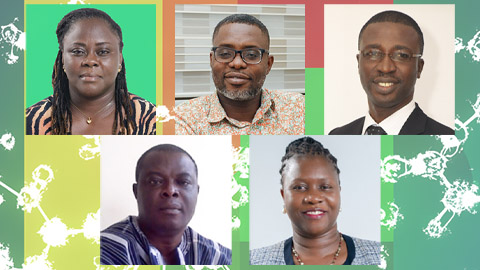Curbing the malpractice of curved grades and high-stakes exams
Faculties on college campuses all over the U.S. responded to recent Black Lives Matter demonstrations with calls for a renewed commitment to a more inclusive and equitable learning environment for our students. Many of us vowed to educate ourselves about systemic racism through activities such as reading, discussion groups and attending seminars.

This work is necessary and important, but if you are like us, you are ready for something more immediately actionable that is under faculty purview and has been shown to produce more equitable outcomes. If so, we suggest you look closely at your assessment and grading policies and think about their purpose. Faculty members have the opportunity to make immediate changes in these areas that can impact large numbers of students and help to increase the diversity of the STEM student pool.
The curve
It is well documented that some course policies not only actively discourage students but are actively discriminatory. Two major research studies, “Talking about leaving” and its more recent updated companion “Talking about leaving revisited,” both cite common approaches to determining course grades as a major factor for why students leave science, technology, engineering and mathematics disciplines. The practice of grading on a curve (that is, predetermining the number of As, Bs and Cs that will be given in a course) sends the clear message that the purpose of the course is to sort students and enforce competition rather than to teach.
While this practice seems intrinsically misguided to many of us, there is ample evidence that it survives — particularly (but not exclusively) in large introductory STEM courses. These courses typically are characterized by what we call high DFW rates, meaning that a large percentage of students are predetermined to receive a grade that does not allow them to continue on to the next course.
Research also shows that grading on a curve with predetermined outcomes has a disproportionate effect on students in underrepresented and underserved minority groups. In a recent paper looking at outcomes in an introductory general chemistry course at the University of Washington where grades are curved (around an average of a 2.6 grade points), researchers write that they found a marked difference in the fates of students who received a C in a course (and were able to continue) and those who got a C- and had to retake the course, despite the fact that there is little demonstrable difference in learning outcomes between the two groups.
Even more distressing are the different outcomes for these two groups of students. Underrepresented students who were allowed to move to the next courses were more successful in terms of completing their degree programs than their majority peers. However, those who had almost identical grades but were deemed to have failed (forced to repeat the course) were less successful than their majority peers. That is, a capricious decision to predetermine what percentage of the class must fail had a profound impact on underrepresented students. What if these students had not been graded on a curve? What if 30% of the class had not been predetermined to fail? As David Asai noted in a commentary in the journal Cell, persons excluded because of their ethnicity or race, known as PEERs, “leave STEM at rates much higher than non-PEERs, and the pattern of poor PEER persistence is essentially the same as it was nearly three decades ago,” an outcome that may be due in part to grading practices.
Rethinking assessments
Certainly, some faculty might defend the practice of curving as a way to prevent grade inflation, but this kind of thinking is aligned with the sorting ethos — only the most deserving should be allowed through the gates into the promised land. Multisection large-enrollment classes often curve grades to ensure that grades are similar across sections, but wouldn’t it be fairer to set standards (mastery goals) and help students meet them?
We need to rethink our approach to assessment, moving from high-stakes tests that have almost no connection to the actual things scientists do to an approach that supports the development of knowledge in use and provides understandable goals for students. Our recent transition to remote education can provide us with the impetus to move away from the high-stakes testing that is so prevalent in many college classes and so detrimental to many students.
Instead of obsessing about students cheating on high-stakes exams and going to extraordinary lengths to prevent this by employing invasive technologies or randomized multiple-choice exams that can test only recall and rote exercises, now is the time to implement mastery learning, continuous assessment and alternate approaches to grading. What if we explicitly spell out what students need to know and what they must be able to do with that knowledge? Our learning objectives should lay out these requirements explicitly.
Rather than requiring students to memorize and regurgitate the essential amino acids, what about asking them to respond to prompts such as “Construct a representative amino acid structure and explain why these substances are soluble in water at pH 7” or “How do differences between amino acids influence the folding of proteins or their catalytic activities?” Instead of having students memorize biological pathways, we could ask them to explain the role of adenosine triphosphate (or thermodynamically favorable and unfavorable reactions) in such pathways.
Rather than a few high-stakes tests, we could provide more lower-stakes checkpoints and other activities that support desired learning outcomes. While some faculty members inevitably will resist these suggestions (after all, it is much easier to use publishers’ test banks that can be randomized and graded automatically), ample evidence exists that the curving practices discussed here are exclusionary and inequitable. If we seriously are committed to more equitable outcomes, we can act to remove one known barrier for underrepresented students.
Now is the time to make these changes, before our commitment to diversity, equity and inclusion fades and we go back to business as usual. Let's seize the moment and make some real changes that directly will benefit our students.
Enjoy reading ASBMB Today?
Become a member to receive the print edition monthly and the digital edition weekly.
Learn moreGet the latest from ASBMB Today
Enter your email address, and we’ll send you a weekly email with recent articles, interviews and more.
Latest in Opinions
Opinions highlights or most popular articles

Getting to know scientists half a world away
In a program at Wellesley College, students interview and write about researchers at a university in Ghana.

Let’s make ASBMB awardees look more like BMB scientists
Think about nominating someone outside your immediate network.

A paleolithic peer review
You might think review panels have only been around for the last century or so. You would be mistaken.

Early COVID-19 research is riddled with poor methods and low-quality results
The pandemic worsened, but didn’t create, this problem for science.

So, you went to a conference. Now what?
Once you return to normal lab life, how can you make use of everything you learned?

My guitar companion
A scientist takes a musical journey through time and around the world.


